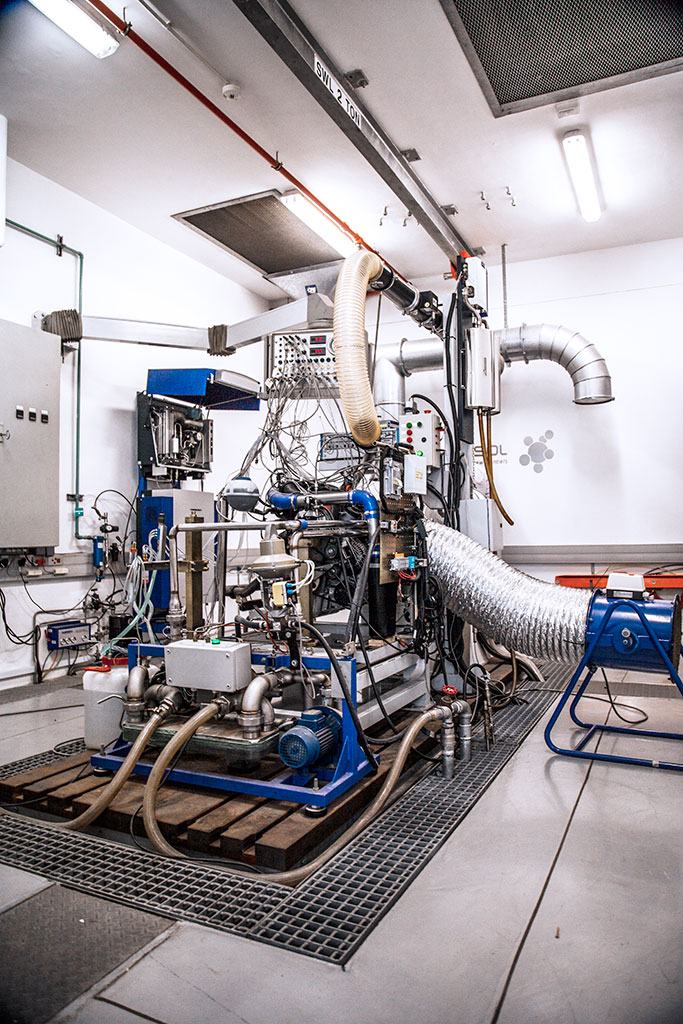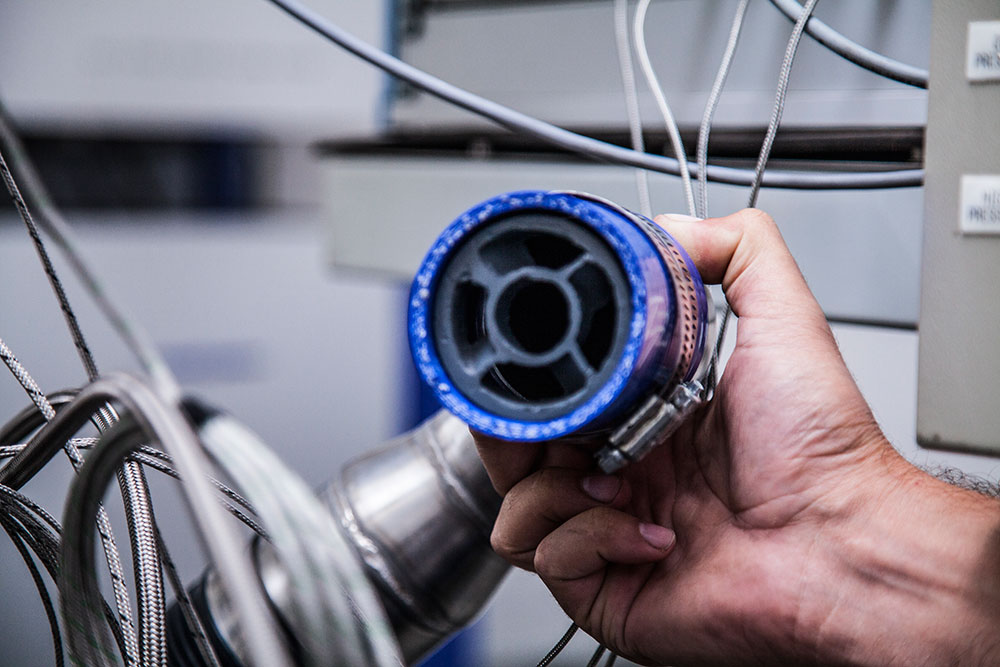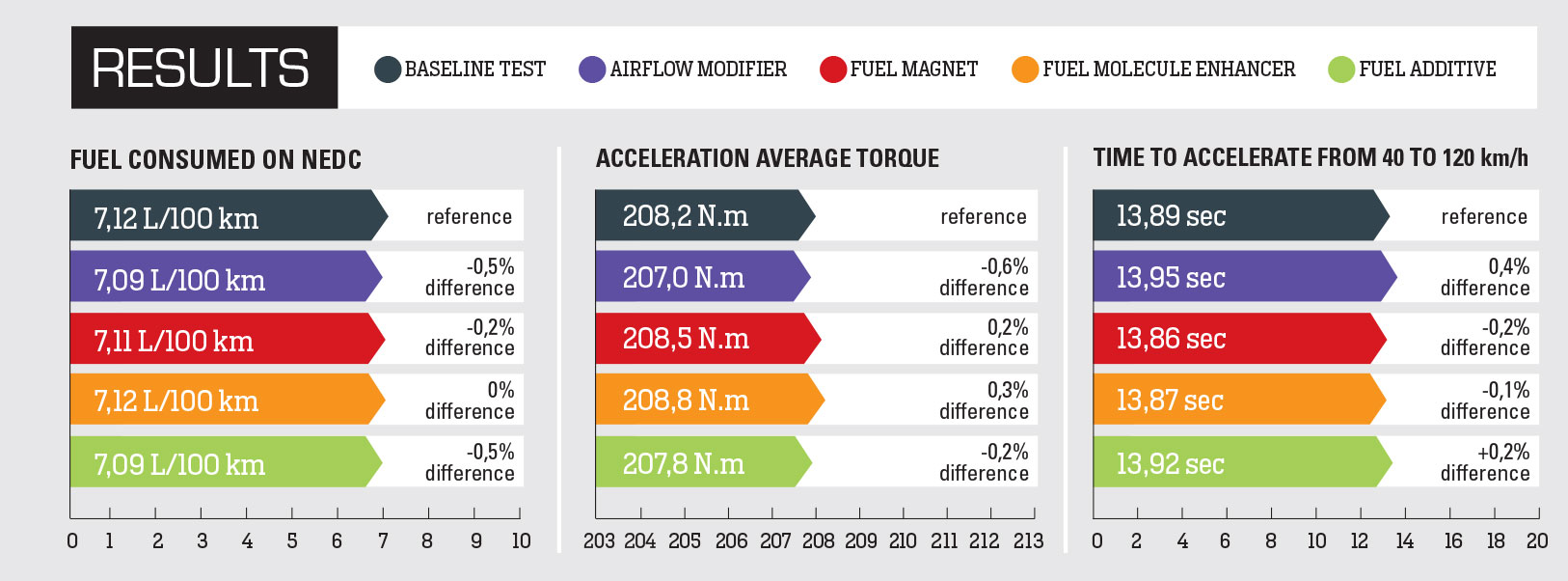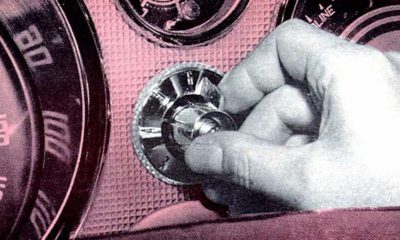Money is tight and fuel-saving devices are tempting. But don’t be fooled – they don’t do what they claim…
“More power! Less fuel!” These promising claims are pasted across the packaging of fuel-saving devices and additives. It is a conversation-starter like few other motoring-related topics, and chats usually involve questions such as: “Why don’t manufacturers use these devices as standard; why isn’t this already in the fuel; and how do they work?”
We decided to put those bold claims to the test by conducting repeatable, scientific fuel-consumption assessments in a laboratory (there are too many variables in on-road testing). Sasol offered the use of its state-of-the-art automotive test facility in Cape Town to verify any changes in fuel consumption and power output for each device.
Generally, fuel-saving devices fall into three categories: change-to-airflow; magnet-type; and fuel-molecule enhancer. A variety of aftermarket fuel additives are also available for many different purposes, some claiming substantially improved fuel consumption and an increase in power. We bought a product from each category and set about verifying the claims.
The test facility
The Sasol Fuel Application Centre is a state-of-the-art fuel research facility in Cape Town that consists of six engine-test cells that are used to research the impact of Sasol’s range of synthetic and crude-oil-derived fuels and lubricants on vehicle emissions and performance. It is the only engine test facility of this kind in South Africa.
Three of the advanced test cells are fitted with AC dynamometers that replicate real-world drive cycles, like the NEDC used for this feature. This facility is also employed to develop new products and to evaluate additive packages, used in Sasol fuels and lubricants, for the local environment. Sasol conducted this test work under the scrutiny of CAR and we thank the company.
The test setup and method
Test engine
A well-known carmaker’s 1,4-litre, forced-induction, direct-injection petrol engine fitted with its original ECU.
Conditions
Sea-level atmosphere, with test-cell temperature set at 22 degrees Celsius.
Test cycles
The engine ran the New European Drive Cycle (NEDC) as used in Europe to validate emissions and fuel consumption results. As only an engine was fitted to the test bed, a mathematical vehicle model (with dynamometer-control software) simulated the inertias and forces that are experienced by the actual vehicle on the NEDC. Therefore, the engine was subjected to similar NEDC speed and load conditions.
The NEDC is considered an international benchmark for fuel consumption measurement and is the same method used to determine the South African CO2 tax figure for vehicles. Read more about it in the August 2013 issue. The final test was a fourth-gear acceleration run from 40 to 120 km/h to determine if there was any detectable power benefit to a fuel-saving device.
Test method
The engine was warmed to operating temperature and a couple of baseline tests were run without a fuel-saving device fitted and using a standard ULP 95 reference fuel. The setup was then modified to include each device in turn to measure differences in performance to the baseline tests. Care was taken to repeat baseline tests to ensure that no changes in the test setup occurred during testing. Furthermore, the engine was preconditioned in the same way before each test to ensure repeatability of the results.
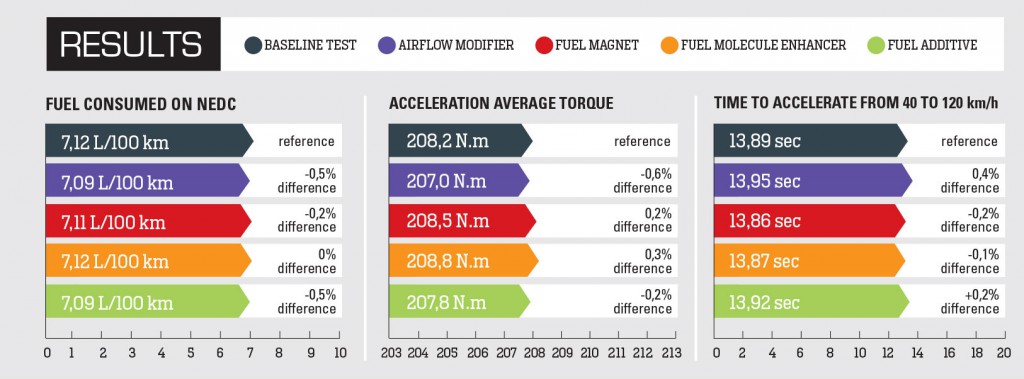
Considering the claimed improvement in fuel consumption is up to 20%, it’s clear from the conclusive, scientific results, which fall within the 1% experimental-tolerance band, that there are no benefits to these devices. Don’t waste your money or risk damaging your engine.
Device type 1, Airflow modifier
Cost: R280
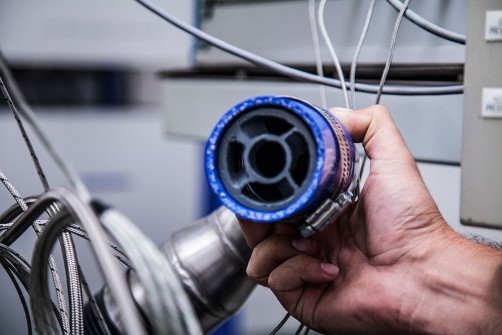
Installation:
In the air intake pipe after the air box that supplies air to the engine.
Claimed benefits:
• 10-15% fuel saving
• Increase in power output
• Reduction in turbo lag
Claimed operating principle:
Airflow to the engine is improved, resulting in better mixing with fuel and thereby increasing performance and reducing fuel consumption.
CAR’s opinion:
Simply put, an additional device in the intake system restricts airflow. Carmakers optimise the air-intake system and any modification impacts the efficiency of the air supply to the engine. The swirling effect of the device on the airflow is lost by the time the air reaches the combustion chambers. This specific product is made of a rough, plastic-type material of low perceived quality. In a worst-case scenario, the product may disintegrate and pieces might enter the engine (or the turbo in charged engines), resulting in damage or complete engine failure. A 10 to 15% fuel saving is impossible given the high state of tune of a modern engine.
Device type 2, fuel magnet
Cost: R350
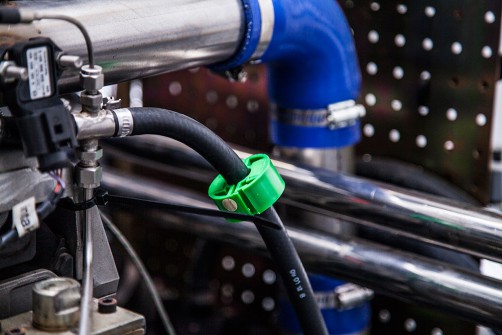
Installation:
Clamped around the low-pressure fuel-supply line.
Claimed benefits:
• 20% fuel saving
• Increase in engine power
• Smoother running and easier starting
• Lower emissions
Claimed operating principle:
The magnet pair creates a magnetic flux across the fuel pipe, which changes the molecular state of the hydrocarbon molecules and leads to a charged state. This allows easier vaporisation and results in more complete combustion.
CAR’s opinion:
The magnets have little impact on the fuel flowing through the pipe and will fail to alter any molecular state. As no energy is added to the fuel and the total combustion efficiency of a modern engine in terms of energy released from the fuel is close to 99%, there is little room for improvement. Roughly one-third of the energy reaches the flywheel, a third enters the cooling system and the balance is lost down the exhaust pipe. A claim of a 20% improvement in fuel consumption is therefore outrageous.
Device type 3, fuel molecule enhancer
Cost: R1 400
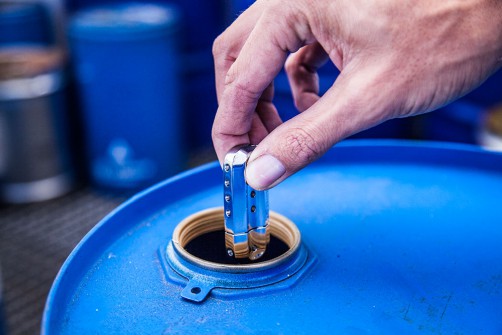
Installation:
Drop the device in the fuel tank.
Claimed benefits
• Fuel saving of up to 20%
• Exhaust emissions lowered by up to 80%
• Enhanced engine power and torque
• Reduction in carbon footprint by 80%
Claimed operating principle:
The unit decreases the surface tension of the fuel, which results in smaller droplets that have a greater surface area exposed to air for combustion. This results in better combustion, with related power and fuel economy benefits.
CAR’s opinion:
Again, total combustion efficiency in a modern engine in terms of energy released from the fuel is close to 99%. Modern engines have sophisticated high-pressure fuel-injection systems to achieve optimised fuel atomisation and mixing. The product claims to last 10 years, which means that, whatever secret technology it uses must be very concentrated because it doesn’t require a refill or charging. We believe this unit will impact the fuel pick-up in the tank and affect the float mechanism linked to the fuel-level indicator.
Device type 4, fuel additive
Cost: R600 a bottle

Installation:
Add to fuel in the tank.
Claimed benefits
• Stabilises fuel for longer storage periods
• Improves power output
• Improves fuel efficiency
• Prevents deposits on engine components
Claimed operating principle:
The product includes an additive that boosts combustion efficiency and raises the octane number of fuel slightly.
CAR’s opinion:
We know certain additives are effective for the purposes for which they are designed, and it is true that most reputable fuel brands already contain a range of additives in their fuels. See the October 2013 issue for a feature on fuel additives. In this case, we can’t comment on the fuel stabilisation or deposit claims. Certainly, many additive types are known to be effective in cleaning injectors, thus providing large efficiency improvements. However, if we consider an engine that’s in a good condition, there is little room for improvement in combustion efficiency. If the octane number of fuel is raised, a slight power increase can be expected because a modern engine-control system advances the ignition timing if no auto-ignition (knock) is detected.
How to (actually) lower fuel consumption
- Drive smoother. Accelerate and brake moderately, and lower your speeds.
- Remove excess mass from the vehicle.
- Detach roof bars and boxes to lower aerodynamic drag.
- Service your vehicle according to the manufacturer’s intervals to keep the engine in tip-top condition.
- Inflate the tyres to specification.
The placebo affect
Websites for fuel-saving devices are full of positive user reviews. How is this possible if they don’t work? Simply put, the reason is the placebo effect. Drivers who buy these (often expensive) devices inadvertently adapt their driving style to be more fuel-efficient. Interestingly, this approach is encouraged on the packaging of the devices… Fuel saving disappears as soon as the driver forgets about the device and returns to a normal driving style.
